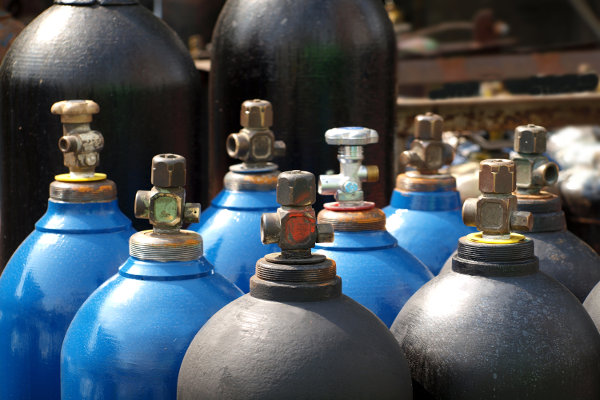Compressed Gas Cylinder Safety Part 2

We use compressed gases for a variety of tasks at our facility. Yesterday we looked at storage of the cylinders . . . today we'll look at some tips for compressed gas handling and use.
Handling and Transporting
- Transport cylinders securely on a cart designed for cylinder use;
- Secure all cylinders during transport;
- Turn all cylinder valves off;
- Attach protective caps securely;
- Prohibit cylinders' use as rollers or supports for other equipment;
- Roll cylinders on their bottom edge when moving them short distances.
Using Compressed Gas
- Inspect all cylinders, valves, regulators, hoses, torches and other equipment prior to use;
- Position the cylinder valve end up when in use;
- Place cylinders away from burning and cutting operations;
- Vent the cylinder by slightly opening (cracking) valve prior to attaching a regulator or any hoses or piping. Avoid being in front of the valve opening when this is done;
- Use the proper regulator for the cylinder to reduce pressure;
- Ensure that all connectors are free of oil and grease;
- Ensure that fuel gas and oxygen hoses are easily distinguishable. All other lines are to be identifiable;
- Disconnect hose couplings with a rotary motion and a pull;
- Open all valves slowly;
- Use a friction lighter to ignite any flame;
- Upon completion, close all valves;
- Close cylinder valves tightly;
- Close needle valves finger tight to avoid damage to valve and/or valve stem;
- Vent all hoses;
- Use a diffuser regulated to less than 30 psi to blow away dust, dirt and debris.
